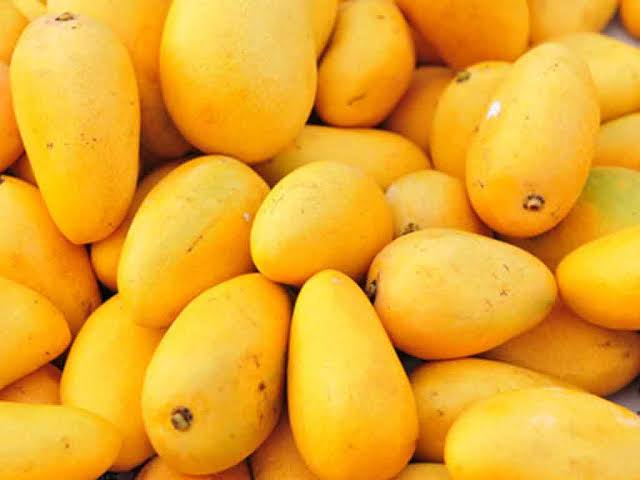The Trade Development Authority Pakistan (TDAP) seeks to improve the export of quality mangoes to increase its share in the global high-end market.
To this end, TDAP has initiated mango bagging under a pilot project in Pakistan’s two main mango-producing districts in Sindh and Punjab.
It seeks to ensure uniformity in size, colour and fruit shape to have premium quality mango with cosmetic appeal.
Around 10 farms have been selected in Sindh’s districts and 15 in Multan, where the project is underway. Unripe mangoes are bagged in a few lower-Sindh mango farms of progressive mango producers in Tando Allahyar.
Markets such as the EU and the UK offer higher profitability but only through compliance to international standards
“Apart from the traditional industries, there are sectors that have huge scope for export, and agriculture is one of them. The government will benefit from increased foreign exchange, and growers from better profitability if the quality of the mango is ensured”, opines TDAP secretary Dr Farid Iqbal Qureshi. He refers to last year’s mango export to Kazakhstan which fetched $36 million.
TDAP has provided paper bags which were porous in nature. Owners of selected farms are supposed to use them to protect mangoes against insects and abrasion, thus preserving their cosmetic value. The bags serve as physical barriers for fruit flies as well.
These are one of the many social compliances and certifications needed for accessing formal high-end markets in the European Union, United Kingdom etc. In contrast, Pakistani mangoes mostly end up in Middle Eastern countries’ ethnic markets. The share of exports in total exports is less than six per cent, which could be enhanced, TDAP official says.
“We do not generally comply with the standards of formal markets abroad. The unavailability of efficient and supportive infrastructure is another stumbling block to enabling mango export to supermarkets, as 70pc of the customers in the EU and the UK buy fruit from these markets.
“We have to first ensure mangoes are healthy, disease- and pest-free with lesser cosmetic issues if we aim to grab high-end markets although the opportunity is wide open for us,” says Mahmood Nawaz Shah, whose farm was selected for bagging mangoes.
He appreciates that TDAP is intervening in the horticulture sector and hopes this would payoff to improve fruit exports to desired destinations.
“Growers avoid getting certifications because of the higher fee structure. As they get an equal return in the market, even after being certified, they see no reason to acquire it. To encourage them towards exports, TDAP, to begin with, may absorb part of the certification fees as a subsidy,” he says.
He says the infrastructure at airports is not supportive towards facilitating the export of quality mangoes to high-end markets.
TDAP officials concede that in the absence of compliance with standards, Pakistani mangoes from Sindh and Punjab don’t fetch the prices that they otherwise would. The authority aims to create awareness among mango producers about required export conditions.
For bagging purposes, TDAP imported the paper to cover unripe mangoes in trees in envelopes. The paper could have been arranged locally as cement companies use it for packing.
If these measures produce good results this year, mango producers will be more inclined to follow them. TDAP’s agriculture consultant, Dr Mubarak Ahmad, points out that the authority will hopefully promote the mango bagging initiative at a bigger scale next year with certain allocations for farmers’ bags if this step shows reasonable impact. “TDAP will connect growers with exporters. Otherwise, the effort will dwindle away,” he says.
Regrettably, Sindh has an unimpressive number of Global GAP (good agricultural practices) certified mango growers: Ghulam Sarwar Abro, Mahmood Nawaz Shah, Junaid Hyder Shah and Syed Zain Shah. Initially, there were eight, but some lost interest for one or the other reason.
Some of these farmers have successfully exported mangoes to Belgium, Netherlands and the UK, though for a limited time, after US Agency for International Development’s intervention at selected farms, leading to the establishment of pack houses.
“Our experience shows qualitative expectations of consumers are higher in markets of value where customers pay more for quality and duly processed fruit,” says Mr Shah. In developed countries, customers are always keen to know the traceability and origin of the fruit. They want very minute details of fruit processing and packaging, he explains.
Since certifications and compliances remain cumbersome and most farmers avoid it, they remain satisfied with dumping their mangoes locally or in the Middle East only to get lower prices. On the other hand, mango crops often fall prey to various pests and diseases that cause considerable production losses during flowering and fruit-setting seasons.
To overcome weaknesses in the mango industry, TDAP intends to sponsor doctoral studies in the mango sector and select teachers from Nawaz Sharif University Multan and Sindh Agriculture University (SAU) Tandojam equally to have quality research and ensure the studies’ usefulness for benefiting exports.
This happened again this year too. Sindh’s mango crop was affected by malformation and hopper, which damaged the crop. Malformation remains contagious with no immediate treatment.
Sindh Horticulture Research Centre (SHRC) survey noted that the crop was hit by hoppers (pest) and malformation. It was visible in Tando Allahyar, which is a second home to mangoes after Mirpurkhas, the hub of Sindhri mangoes.
He attributed malformation to unusually lower temperatures in February when trees need temperatures between 15-24 degrees Celsius. Many orchards don’t get aeration and sunlight, which are vital for trees to bear healthy fruit. Orchards where trees get aeration and sunlight were not affected, he says.
Owners who sprayed crops in January and used fungicides in November were better able to have their fruits. “We believe yields in orchards will be affected,” he fears.
Growers feel that the unending disease pattern shows much-needed research interventions that are lacking in Sindh, which worries mango producers.
“While TDAP’s initiative for producing quality mango is good, the main problem is the diseases that affect mango trees almost every year. My orchards are hit by malformation badly, leaving leaves in the trees blackened. We need to seriously ponder over these issues first to fix them,” says another mango grower, Taha Memon.





